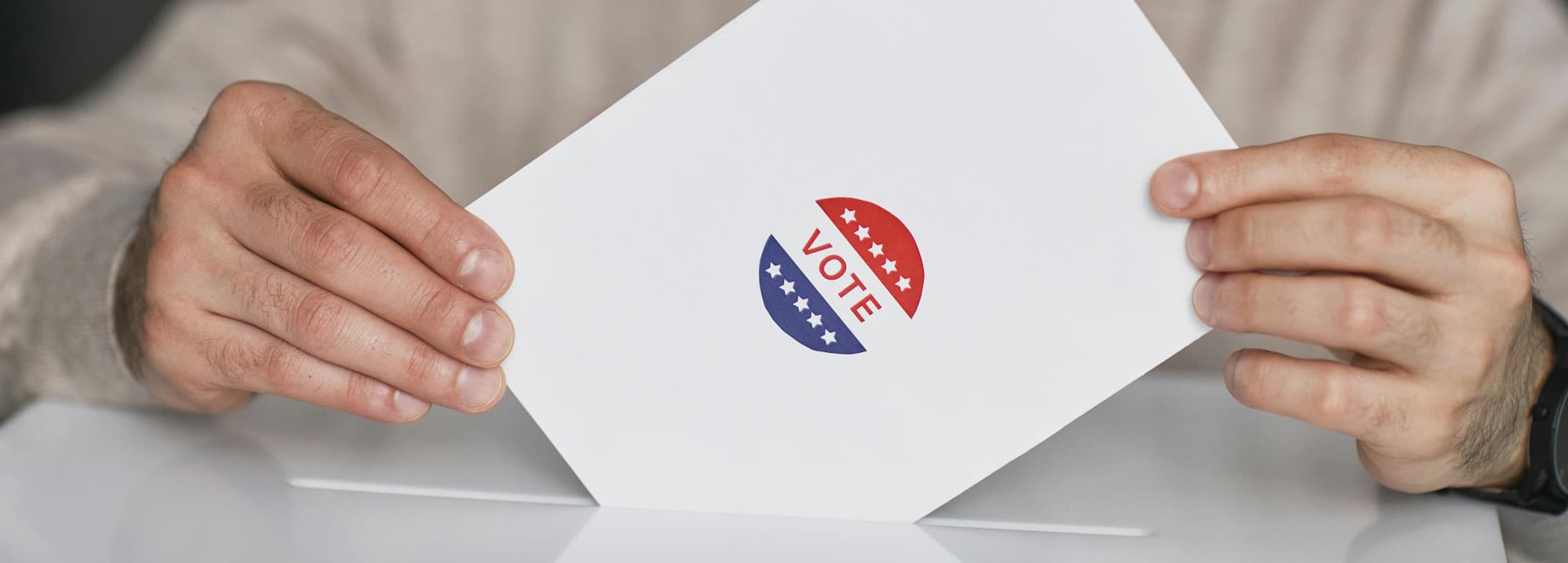
Open Primary vs. Closed Primary: Exploring Different Primary Election Systems
What is the purpose of a primary election, and what are the types of primary elections? This guide will provide the answers to these questions, while discussing the advantages and disadvantages of each primary election system.
Introduction to Primary Elections
Primary elections narrow down the number of candidates that will appear on the ballot during general elections. The results of a primary election determine which candidates will appear on the ballot during the general election. Primary elections help to make the election process more efficient. They also influence or sometimes determine the outcome of the general election.
Primary elections take place at both the state and federal level. However, different states have different rules for their primary elections. The main two types of primaries are open and closed primaries. In both systems, voters cast their votes in the primary of a specific political party.
What Is an Open Primary System?
An open primary system allows voters to vote in whichever party’s primary they choose, regardless of the voter’s party affiliation. Each voter can only vote in one party’s primary.
The main advantage of an open primary system is that voters do not have to be registered with a specific party to participate. This makes it easier for independent voters to have their voices heard.
Voter turnout is generally higher in open primaries, compared to close primaries. According to the Bipartisan Policy Center, states that adopted open primary systems saw an average voter turnout of 24.5 percent, while states with closed primary systems saw an average voter turnout of 20.7 percent.
One point to consider with open primaries is that “crossover” or strategic voting can occur, when voters affiliated with one party vote in another party’s primary. For example, a Republican might vote in their state’s Democratic primary. If this voter lives in a state dominated by Democrats, they might be hoping to see a more moderate candidate elected, knowing there is little chance of a Republican candidate winning. Another motivation could be the voter’s desire to vote for a Democratic candidate they perceive as weak or unviable, in hopes that that candidate will be easier to defeat in the general election. Consequently, a main concern with open primaries is the potential dilution of party ideology.
The following states use open primaries in state elections:
Alabama
Arkansas
Georgia
Hawaii
Michigan
Minnesota
Mississippi
Missouri
Montana
North Dakota
South Carolina
Texas
Vermont
Virginia
Wisconsin
Note: This guide’s lists of states’ primary systems come from the National Conference of State Legislatures.
What Is a Closed Primary System?
A closed primary system allows only voters who are registered with a political party to vote in that party’s primary. To vote in a Republican primary, a voter in this system would have to be registered with the Republican party.
An advantage of closed primaries is that voters affiliated with one party cannot try to sabotage the outcome of another party’s primary. Party ideology can then be preserved more easily. Supporters of closed primaries would argue that this preservation is important to the democratic process, while critics may argue that keeping primaries closed along party lines adds fuel to political polarization.
A disadvantage of closed primaries is decreased voter participation. Independent and unaffiliated voters may also find themselves more excluded from a closed primary system.
The following states use closed primaries in state elections:
Delaware
Florida
Kentucky
Maryland
Nevada
New Mexico
New York
Oregon
Pennsylvania
Tennessee
Open vs. Closed Primaries: Key Differences
To review, here are four key differences between open and closed primaries:
Open primaries allow voters to vote in whichever primary they choose. Closed primaries require voters to be registered with a party in order to vote in that party’s primary.
Open primaries have higher voter participation than closed primaries.
Closed primaries reduce the chance of “crossover” voting, which can happen in an open primary system when voters affiliated with one party strategically vote in the other party’s primary.
Independent and unaffiliated voters are more often eligible to participate in open primaries than closed primaries.
Other Types of Primary Systems
There are more types of primaries than just open and closed primary systems. The following are other types of primary systems in the United States:
Partially-Closed Primary
This system is similar to a closed primary, except that parties can choose whether to allow unaffiliated voters to participate in their primary. This system allows for greater flexibility, but can also lead to confusion about voter eligibility.
The following states use partially-closed primaries in state elections:
Connecticut
Idaho
North Carolina
Oklahoma
South Dakota
Utah
Partially-Open Primary
Like in an open primary, voters in a partially-open primary system can choose whichever primary they would like to participate in. Unlike in an open primary, voters either publicly declare which primary ballot they choose, or become registered with the party whose ballot they choose, depending on their state. This system remains more open than a closed primary, but also reinforces the dominance of the two-party system.
The following states use partially-open primaries in state elections:
Illinois
Indiana
Iowa
Ohio
Wyoming
Open to Unaffiliated Voters
This system requires voters who are registered with a party to only vote in that party’s primary, but also allows unaffiliated voters to choose which primary they would like to participate in, without disrupting their unaffiliated status.
The following states use primaries that are open to unaffiliated voters in state elections:
Arizona
Colorado
Kansas
Maine
Massachusetts
New Hampshire
New Jersey
Rhode Island
West Virginia
Top-Two Primary
In a top-two primary, all candidates appear on one common ballot. Voters may still be asked to state their party affiliation or preference, but in this system, the top two candidates who receive the most votes in the primary advance to the general election, regardless of party affiliation.
The following states use top-two primaries in state elections:
California
Washington
Other Types of Primaries
Louisiana’s primaries are similar to the top-two system. In Louisiana, if a candidate wins over half the vote, that candidate is elected immediately. Otherwise, the top two candidates move on to a run-off election.
Nebraska elects legislators on a nonpartisan basis, without including a partisan designation on the ballot. Alaska uses a top-four open primary system.
Considerations for Voters
Open and closed primaries are the most common types of primary election systems in the United States, though many states use hybrid or variant systems. Understanding how your state’s primary election system works can help you be an informed voter.
It is important to keep in mind that the above lists of states’ primary election systems apply to state elections. Federal or presidential elections work slightly differently, as some states use the primary system and others use the caucus system.
In the end, it is up to you to decide which primary election system you think is most fair and equitable. As you think about the different systems, consider your own values and level of party affiliation. How important is it for independent and unaffiliated voters to have an equal say in primary elections? How much do you participate in primaries? How important in your view is partisan ideology?
Conclusion
Open and closed primaries offer distinct advantages and disadvantages. Open primaries can increase voter participation, while closed primaries can help to preserve party ideology. Whatever primary election system your state uses, be sure to register to vote and participate in your state’s primary! To learn more about the primary system, read our blog on open primaries’ history, mechanics, and implications.
Photo by Edmond Dantès
Learn more about elections and government in the United States.

